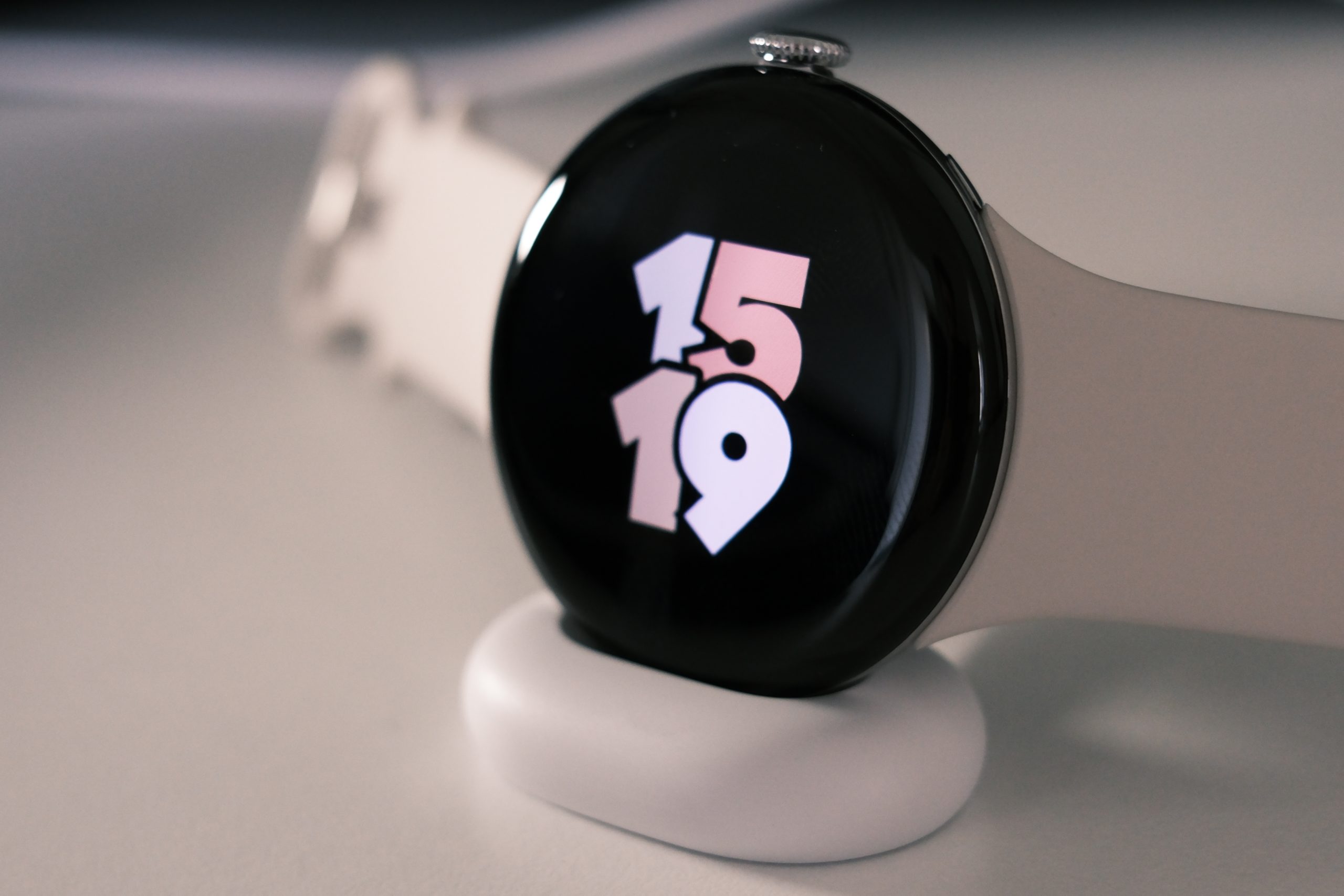TL;DR
The Pixel Watch 4 isn't a total redesign but a solid evolution, addressing key Pixel Watch 3 pain points. It boasts a noticeably larger, brighter screen, a dramatically improved battery with super-fast charging (25 mins from 20%), and refined fitness tracking with more precise GPS. Ergonomics get a boost with a more prominent, easier-to-use button. Gemini is smarter and faster, though still best in English. The main drawbacks are needing a new charger and Gemini's weaker Swedish performance. If you're in the Google ecosystem, this refined smartwatch is a compelling upgrade worth diving into. Read the full review to see why!
Reviewing the latest Google Pixel Watch has become a regular fixture for Senses. This marks the fourth iteration of Google’s popular smartwatch and our third opportunity to provide an in-depth analysis. We are pleased to share our comprehensive impressions of the Google Pixel Watch 4.
First Impression
Upon unboxing the Pixel Watch 4, its striking resemblance to its predecessor, the Google Pixel Watch 3, is immediately apparent. This sense of déjà vu is further amplified by Google providing a review unit in the identical color combination. Prior to activation, the sole discernible physical alteration is the repositioning of the charging contacts from the rear to the side of the device. We will delve into further distinctions shortly.
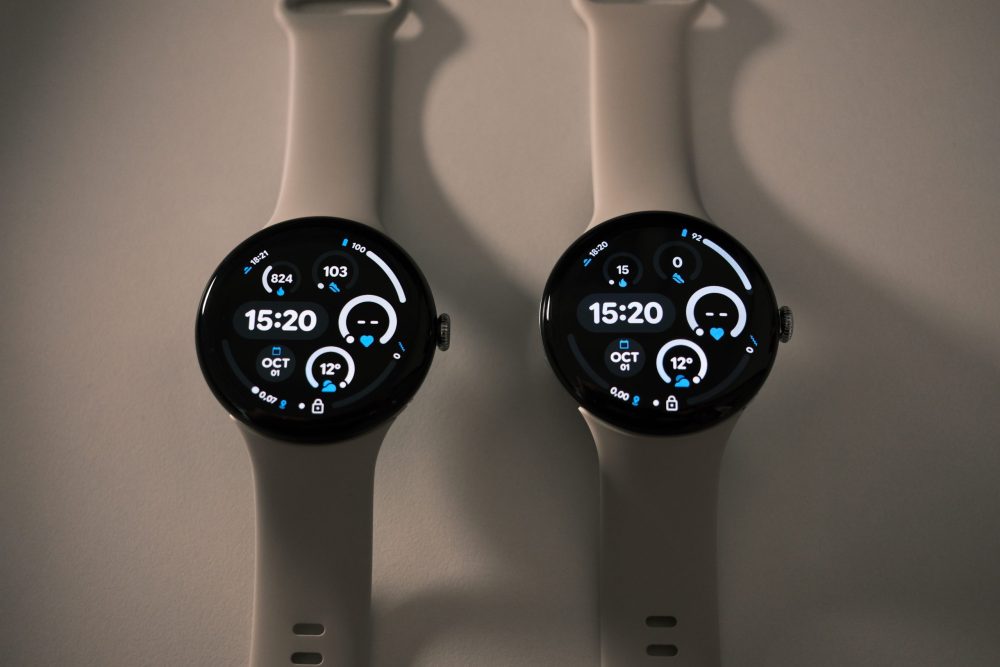
The Screen
Upon activating the Pixel Watch 4, the most significant aesthetic divergence from the previous generation becomes immediately apparent: the display. Despite identical external dimensions, the screen area has been notably expanded, a change that is genuinely perceptible. This larger display accommodates more information, thereby reducing the need for extensive scrolling. PIN entry for screen unlock is significantly smoother, though it remains an interaction where occasional errors occur. Another novel feature contributing to the watch’s modern feel is the curved display panel itself, a departure from its predecessor’s flat screen beneath curved glass. This represents a distinct aesthetic enhancement.
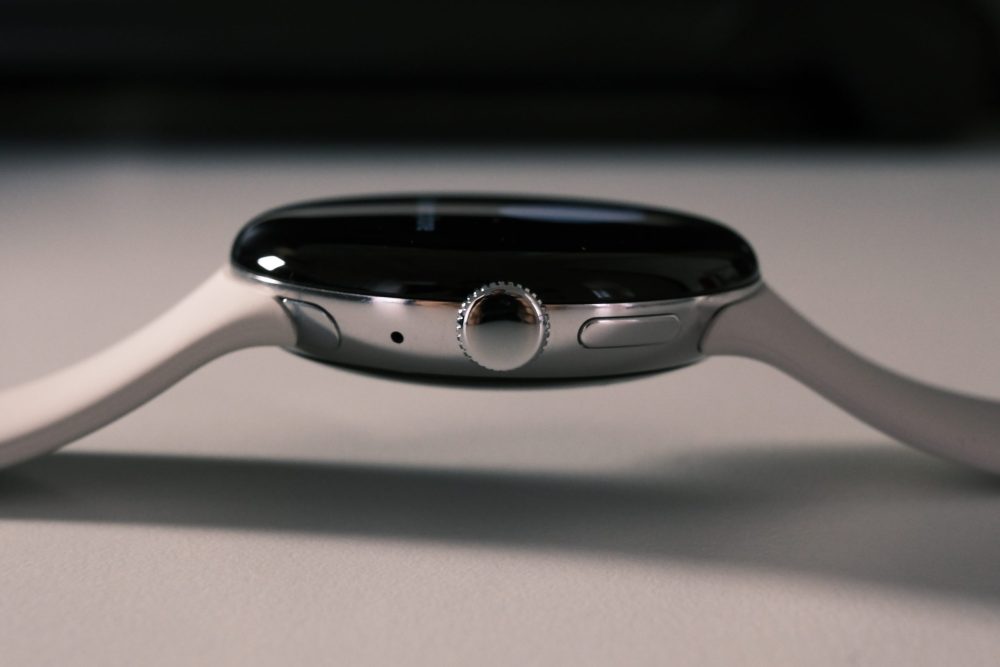
The Battery
Battery life often represents a significant challenge for smartwatches, and previous Pixel Watch iterations have historically exhibited moderate endurance. For this generation, several enhancements have been implemented to address battery performance. These include an increase in battery capacity, the integration of a new, more efficient processor, and a substantial improvement in charging speed. While increased battery capacity is a welcome addition, the rapid charging capability stands out as particularly impressive. Our testing shows that a brief morning routine, such as showering and brushing teeth, allows the watch to go from approximately 20% to a full charge in about 25 minutes. At this speed, the raw battery capacity becomes less critical for daily usage. However, for extended excursions or activities requiring prolonged use of power-intensive features like GPS, without access to charging, alternative devices may offer superior endurance. (For example, a Suunto?)
Fitness and Daily Use
For those familiar with our previous review of the Pixel Watch 3, the Pixel Watch 4 offers a comparable user experience. While the core functionality remains consistent, several aspects exhibit noticeable refinement. Specifically, GPS tracking in this generation is demonstrably more precise, though occasional instances of satellite signal loss still occur. Additionally, Google appears to have optimized its algorithms, enhancing the watch’s ability to automatically detect various activities. A particularly strong improvement is its proficiency in sleep detection, consequently enabling automatic activation of sleep mode to prevent disturbances. This feature proves highly beneficial for continuous wearers who may neglect to manually engage sleep mode, thereby avoiding untimely notifications. However, a persistent quirk is the Pixel Watch 4’s tendency to incorrectly log cycling sessions when the user is operating an electric scooter.
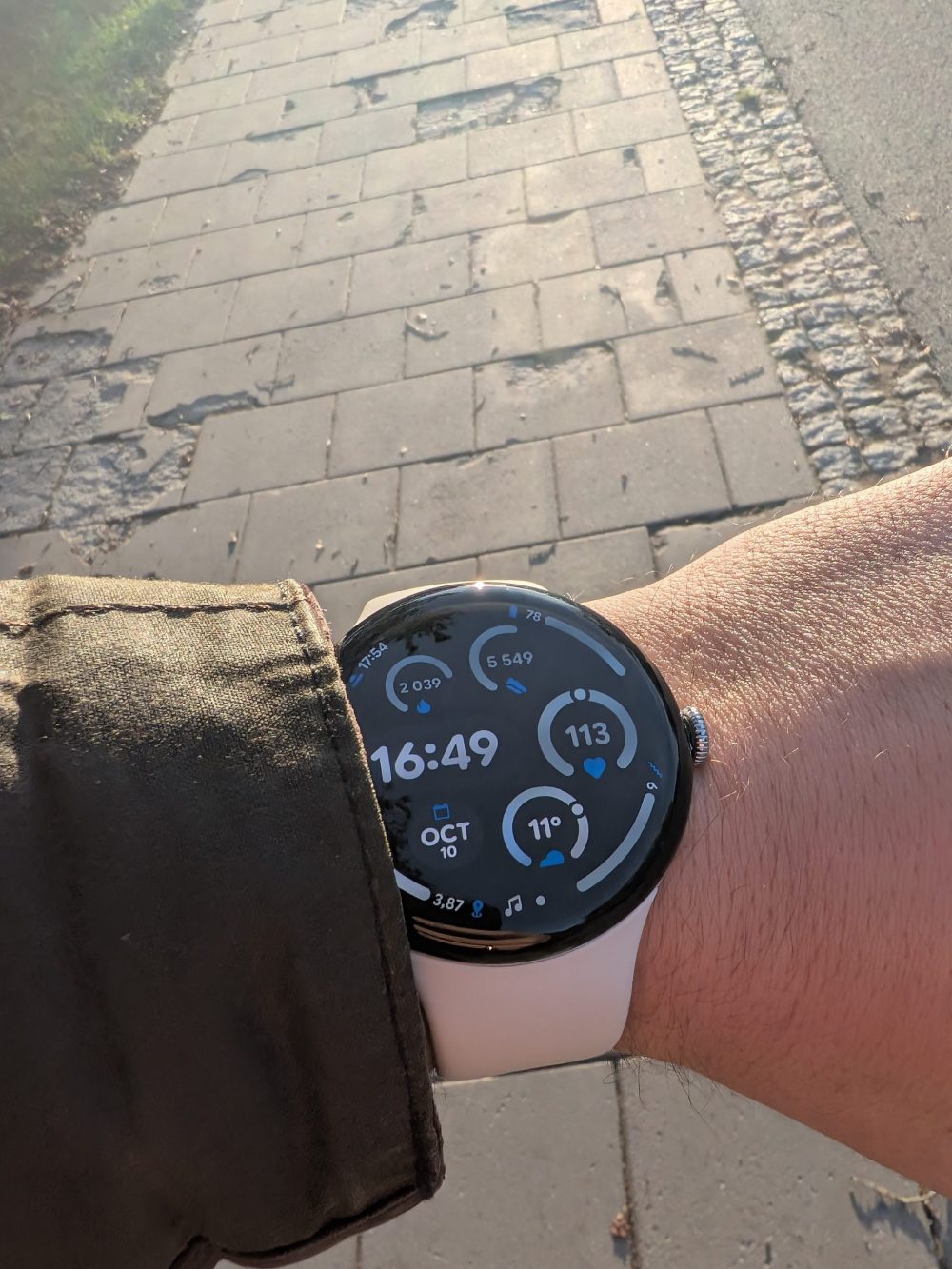
Design Details
As noted in our initial observations, the watch maintains a largely identical aesthetic to its predecessor. However, Google has meticulously refined key details that significantly impact daily user experience. Beyond the enhanced display, the most notable improvement is the physical button. Previous iterations, the Pixel Watch 2 and 3, featured a discreet button positioned above the crown that could be challenging to actuate. In the current model, Google has redesigned it to be both larger and, critically, more prominent. The outcome is substantially improved accessibility, even when wearing gloves or during strenuous activity. While seemingly minor, this represents a crucial ergonomic enhancement for users who rely on the watch for more than passive notifications.
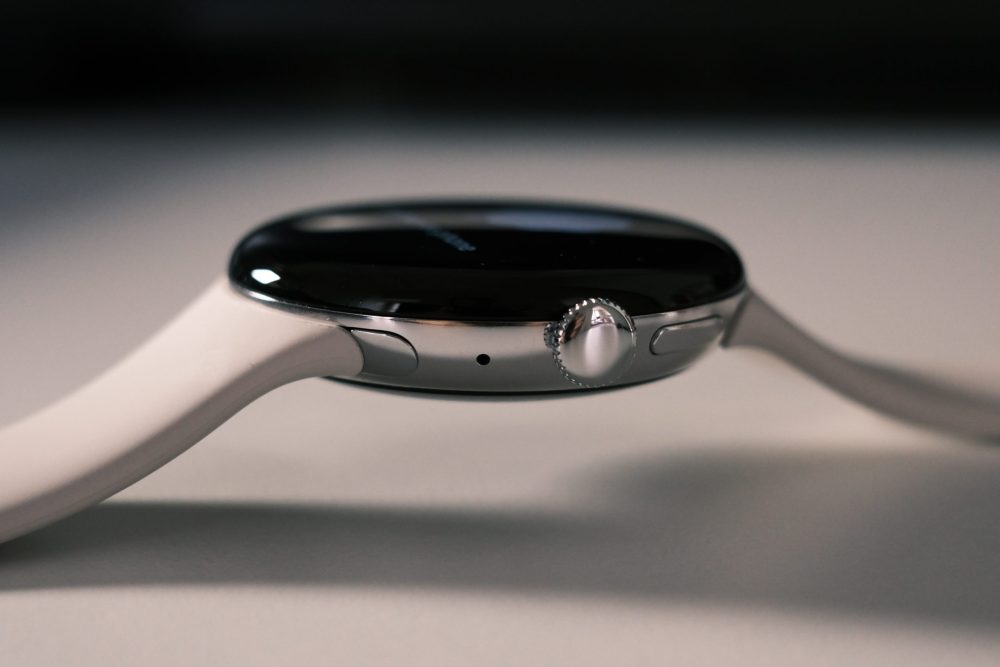
The repositioning of the charging contact to the side is another significant alteration. While this may be an aesthetic decision, it introduces a practical drawback: the requirement for a new charging cable. Consequently, existing Pixel Watch 2 and 3 chargers, which users may have strategically placed in various locations, are rendered incompatible. From an editorial perspective, standardization is highly valued, and the necessity to decommission perfectly functional cables is a clear disadvantage, even considering the improved charging speed.
Gemini
A primary strength of the Pixel Watch series lies in its streamlined Wear OS experience and seamless integration within the Google ecosystem. While the operating system’s core remains familiar, the integrated assistant has received a significant upgrade this year: the new Gemini. The ability to activate the assistant via a button press for dictating queries, controlling smart home devices, or responding to SMS messages proves invaluable for daily use. Gemini, as advertised, demonstrates enhanced intelligence and speed compared to its predecessor. While quantitative benchmarks are challenging to apply, the subjective user experience is notably more intuitive and responsive.
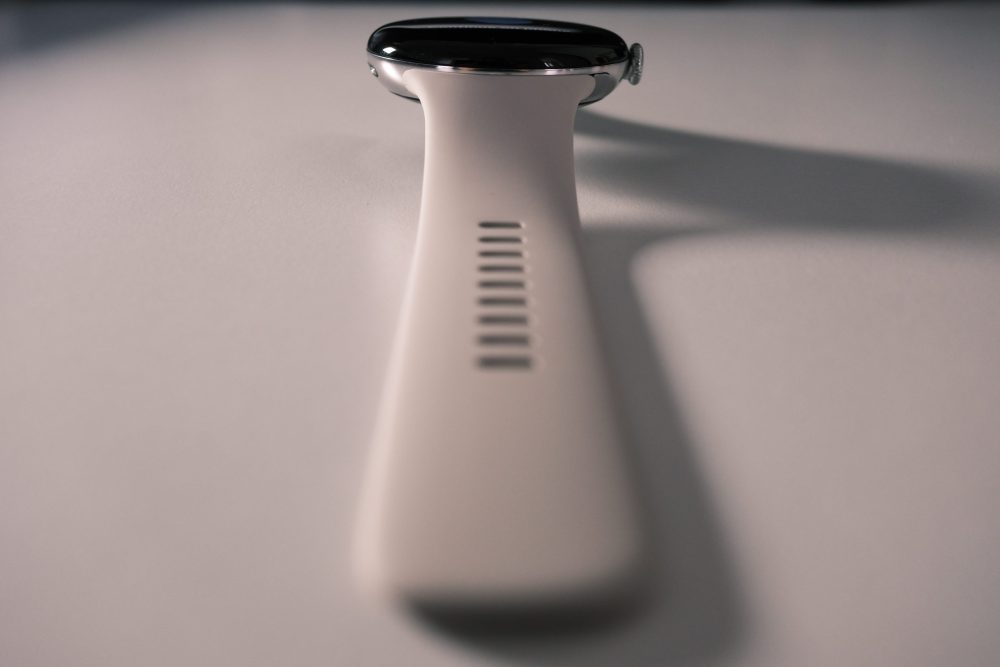
Nevertheless, a persistent limitation observed across our reviews remains: Gemini’s performance is significantly superior in English compared to Swedish. Queries posed in English consistently yield accurate and comprehensive responses, whereas Swedish comprehension and speech recognition accuracy still require further refinement. This issue is not exclusive to the Pixel Watch 4, yet after multiple generations, we anticipated Google would have addressed this discrepancy for the Swedish market.
Conclusion
The Google Pixel Watch 4 represents not a revolutionary leap, but rather a significant evolution in the correct direction. Google has demonstrably incorporated user feedback, addressing several key shortcomings prevalent in previous generations. The display now achieves an appropriate size and brightness. Battery life has improved, and the exceptionally rapid charging capability mitigates concerns regarding overall capacity in daily usage. Subtle enhancements in fitness tracking, including more reliable GPS and improved activity recognition, position it as an even more effective tool for the casual user. The redesigned, easily accessible physical button further elevates its ergonomic profile. Minor drawbacks persist, notably the requirement for a new charging cable and the Gemini assistant’s less refined performance in Swedish. Priced at 6700 SEK for the premium 45mm 4G variant, it competes within a highly competitive market segment. However, for Android users, particularly those within the Google Pixel ecosystem, the Pixel Watch 4 stands as arguably the most comprehensive and aesthetically refined smartwatch available. This iteration offers compelling reasons for consideration.
Test units for this review were provided by Google. Material providers exert no editorial influence on our evaluations.
